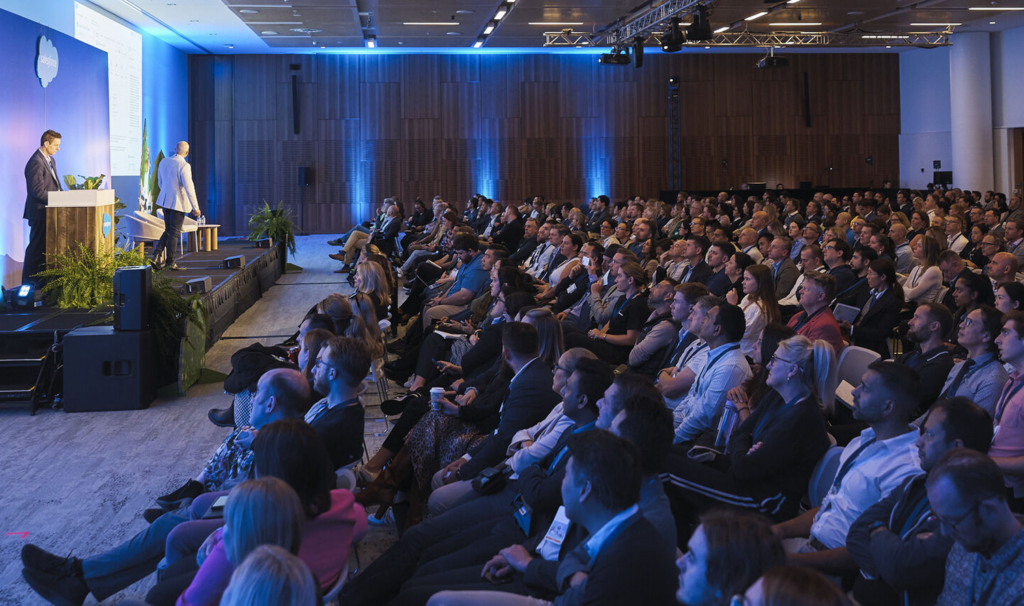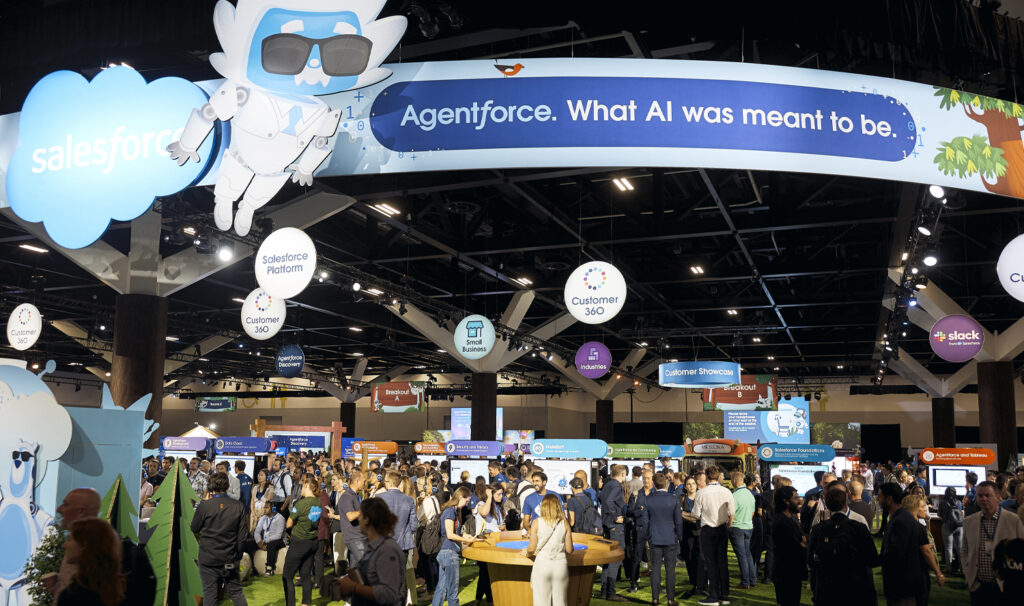In a two-part series, we’re sharing insights from our customer Office for Ageing Well and two of Simplus’ public sector experts, to help demonstrate what a successful digital transformation looks like and how your government body can do the same.
What distinguishes a successful digital transformation from one that’s unsuccessful? It’s a question the public sector has been exploring for some time, especially with the private sector leading the charge on a customer-centric digital change.
With an appetite for the modernisation of government services rapidly growing – the Australian Government launched its inaugural digital strategy last year – we asked our experts to share their digital transformation insights and what advice they have for departments and agencies wanting to become more customer-centric.
Advice from an Account Executive
Sometimes getting started on a transformation project is the hardest part. How can you be sure you’re not going to repeat past mistakes, especially if you want your transformation to stand the test of time. It’s a concern that Simplus Account Executive David Bowker has faced before when working with government clients. So, what’s his advice for thinking outside the box?
#1 Be open to different perspectives
With technology changing service expectations, both the public and private sectors need to be more innovative in delivering digital customer service. For government agencies, this can be more challenging because the default is to go with what other departments are doing – people like the reassurance of knowing what’s happening elsewhere.
But from my experience, some of the best projects I’ve worked on are the ones where commercial and government insights combine to develop an innovative approach.
When you work with people with different areas of expertise and perspectives, there’s a more significant chance of success because you’re not just doing “What has always been done”.
#2 Come with a strategic vision
One of the most common challenges we face is clients not realising how much time and effort is needed to deliver a successful digital transformation. If a client has a strategic vision in place, then an implementation partner can come in, look at the true value of the project and determine what needs to be done to get it operational as quickly as possible.
Part of that vision might include teaching employees the concepts of CRM and marketing automation. Having a defined strategy which provides for training can even help teams articulate what they want a transformation to achieve.
#3 Define what success looks like
A transformation can be delivered really well, but if it doesn’t meet the success criteria or even have a criteria, then you really have to consider the point of the project. And for government agencies defining success isn’t just good business it’s also helpful for Budget Estimates.
We always advise clients to define their measurements of success. Just because a new technology is being implemented, it doesn’t mean it’s going to improve all these different things. You need to clearly define your milestones, and what success looks like.
#4 You don’t have to spend millions to achieve progress
Think you have to pay millions to do a transformational service project? Think again. The truth is you can get so much value out of a small budget – it’s all about how you approach it.
We have a philosophy of implementing something small, show that it works and then build it up. If a client wants to start with a minimal viable product, they can use it, note down improvements, and then we come back in and make enhancements. Sometimes people don’t know exactly what they want until they start using something.
Advice from a public servant
Manager, Seniors Card & Business Services at Office for Ageing Well Evlynn Hayes
has delivered savings of $150,000 and zero customer complaints from implementing a full CRM into her Seniors Card program – which makes her a government digital transformation success story. Wondering how you can get your executives on-board with a digital transformation and connect with your customers? Evlynn shares her strategies.
#1 Reframe what your customer looks like
Avoid falling into the trap of stereotyping your customer. At the Office for Ageing Well, we needed to re-examine the needs of a 60-year-old versus the needs of a 100-year-old.
Take the time to engage and consult with your customers, hold roundtables and commission research. It’s when these two pieces come together and actually marry up that you know you’re on the right path.
#2 Form a business case
Operating as a government agency does come with its own unique challenges, such as navigating procurement red tape. Nowadays, having a big dream and a clear vision isn’t enough to get risk-averse executives over the line, you need a business case to support your ideas.
To get executive buy-in for the Seniors Card program Salesforce CRM I knew it was always going to be about the bottom line. Bringing a suitable system in-house would allow us to manage our 700 businesses – who brought in over $400,000 in revenue – and our 350,000 members base, promising a cost-saving. Our business case was solid, and by doing our due diligence and checking off data privacy requirements, we were able to expand our existing Salesforce Sales Cloud to the full CRM capabilities.
#3 Think five steps ahead
For me, I’m always thinking about the next thing and the next thing after that! When you’re planning an implementation, you want to make sure you’re catering for the future. Too often I see failed government projects in the media, and it’s usually because what they thought was innovative and new at the time, is actually old news tomorrow.
When planning, you want to consider sustainability and longevity, and you want an implementation partner who can provide advice and recommendations for long-range solutions.
#4 Keep up with changes and trends
When you’re working within the digital world, you have to factor in its changing landscape. Now you just need to blink, and another iteration of the iPhone is out! Factor in time to keep up with changes and trends, particularly if you lead a busy team with a considerable output of work.
I find it helpful to implement a mandate where everybody has an hour in their diary once a fortnight for thinking time.
Advice from a project manager
Once you have your digital transformation across the line, it’s time to think about how it’s going to be used day-to-day.
Simplus Project Manager Yanis Guzel
has worked with various state government agencies to implement a range of different technologies and systems to deliver customer-centric projects. His learnings? Focus on the people powering the technology.
#1 Form a successful partnership
A great implementation partner will come in and form an understanding of the ecosystem of that particular organisation. A CRM is so valuable to frontline staff that you want your implementation partner to really touch on their day-to-day needs and provide a level of empathy.
A digital transformation isn’t just about business requirements, it’s about your people’s needs to effectively do their job.
#2 Encourage a single view of the customer
For most government agencies, they’re not just servicing mixed demographics, but also customers spread across broad geographic regions. To be able to service these customers effectively, you want to take an omnichannel approach.
So, what do I mean by omnichannel? It’s using a range of channels to connect with your customers. It’s your website, your online chat, your enquiry line and your walk-in channels. When someone contacts your agency, you want to be able to follow that trail – how did they get in touch, who did they speak to, and what did they speak about? This should be part of your CRM strategy to help form a single view of the customer and provide next-level customer data insights and government customer service.
#3 Empower your employees with the knowledge to provide great CX
Not only are we in a new omnichannel era, but we’re also in a digital age where customers expect exceptional customer service – and this applies to government services. To deliver this, you need to support your employees to become experts in their respective areas.
Service NSW is a government agency who has done this really well. With one particular project, Service NSW empowered front-line staff with a digital toolset to help them service customers when new rebate entitlements were announced. For example, if a customer called up and enquired about which rebates they could claim, the service representative would ask a set of predetermined questions and based on the customer’s answers the digital tool determined the number of eligible rebates. The service representative can then confidently relay that information to the customer.
#4 Ensure employees are ‘change fit’
If you want your staff to be ready for change, you need them to understand the value behind it. Sometimes this can be harder to demonstrate to employees who have been part of an agency or department for a long time.
Really effective change comes from transparency and inclusivity. Bring people from all areas on the journey with you and show them the impact the change has on the agency or department and also the customers. Talk about the project; what’s it looking to achieve, what’s the priority of the project in terms of executive endorsement, how does it compare to other projects or programs? If employees can see visual indicators, your transformation is much more likely to be met with excitement, and you’re going to have a lot more buy-in.
Want to learn more?
Read the Office for Ageing Well’s full digital transformation story in part one of this series, and learn how they turned government digital services on its head. To learn more about our solutions for the Public Sector in Australia click here.






